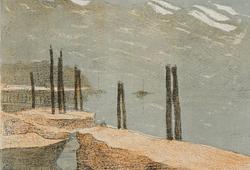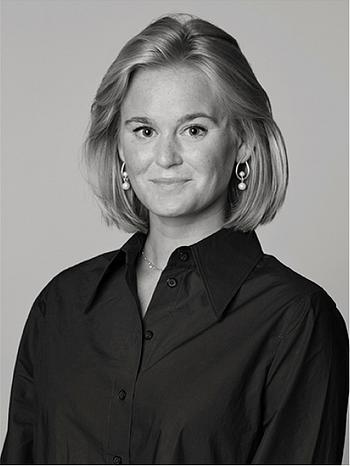Carl Kylberg
"Blommor och frukter"
Signed by Carl Kylberg. Executed circa 1938. Canvas 52.5 x 70 cm.
Provenance
Dr. Sven Falk, Valla.
Gunnar Samuelson, Stockholm.
Purchased through Blasius Konsthandel, Stockholm.
Private Collection, Stockholm.
Exhibitions
Svensk-Franska konstgalleriet, Stockholm, "Carl Kylberg – solo exhibition", April 1940.
Musée National d'Art Moderne, Paris, "Carl Kylberg", October - November 1951, cat. no. 46.
Liljevalchs konsthall, Stockholm, "Carl Kylberg minnesutställning", 1954, cat. no. 123.
Palais des Beaux-Arts, Brussels, 1952.
Paderborn, Germany, "Carl Kylberg 1878-1952", November 1966 in collaboration with the Svensk-Franska konstgalleriet, cat. no. 22.
City Museum of Eindhoven 1967, cat. no. 22.
Literature
Brita Knyphausen, "Carl Kylberg - Färg och idé", 1964, cat. no. 217, p. 254.
More information
Throughout his career, Carl Kylberg returned to still lifes, or Nature morts as he seems to have preferred to call them. The earliest mentioned in Brita Knyphausen's list of the artist's works is dated 1903; the latest in 1951, the year before his death. Kylberg's still lifes usually consist of arrangements of vases, pots or other objects, alone or together with single fruits or flowers. Each object is well separated and characterised by an almost ascetic simplicity. There is a kind of clarity to the motif, a simplicity of colour, where nothing is missing and nothing is left unnecessary.
Artist
Carl Kylberg, 1878-1952, is considered a seminal figure in the Swedish 1900-century art. He was a student at the architecture department at Berlin University and then a student of Carl Wilhelmson at Valand art school in Gothenburg.
Kylberg broke through late, made his debut as a painter in 1919 with the February group at Liljevalchs. He became known to a wider public by the age of 50, but continued to be controversial as an artist. He had a permanent artistic antagonist of Isaac Grünewald and the same year as the Nazis in Germany set up the decisive blow against Entartete Kunst and practically the whole of modernism, Swedish government stopped the purchase of the painting "Uppbrottet" of the National Museum in Stockholm.
Read more

































































